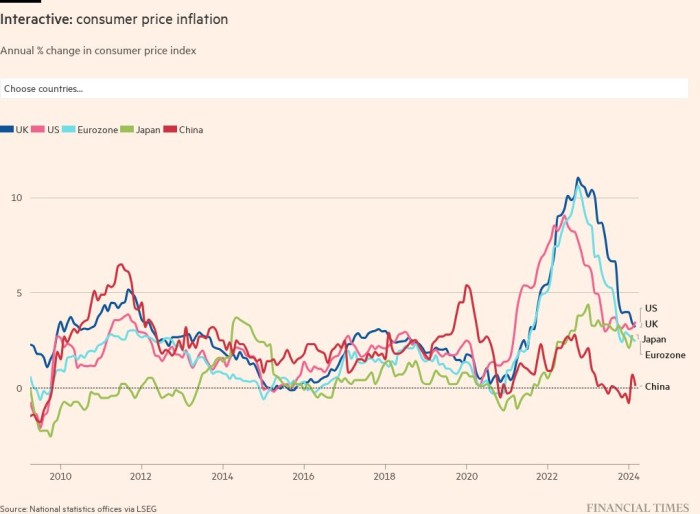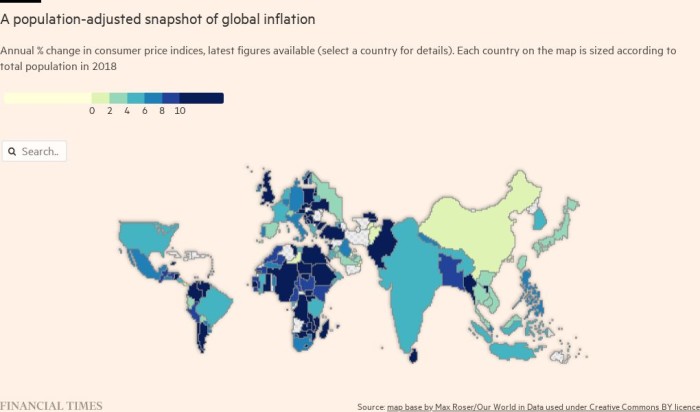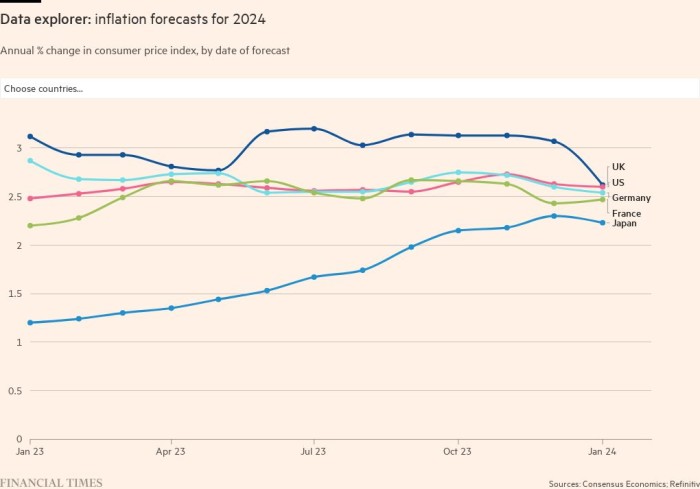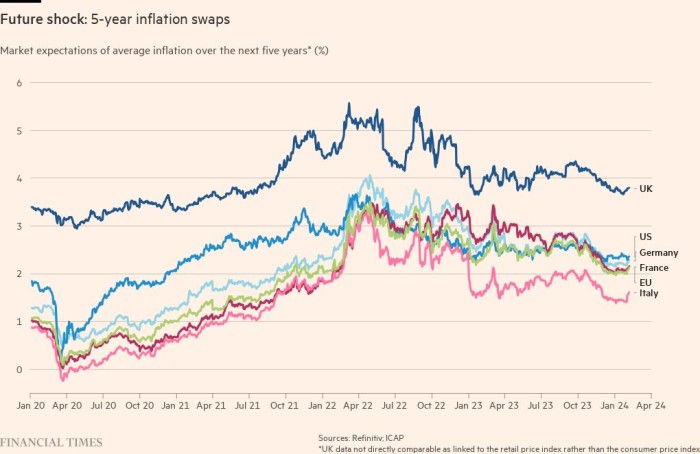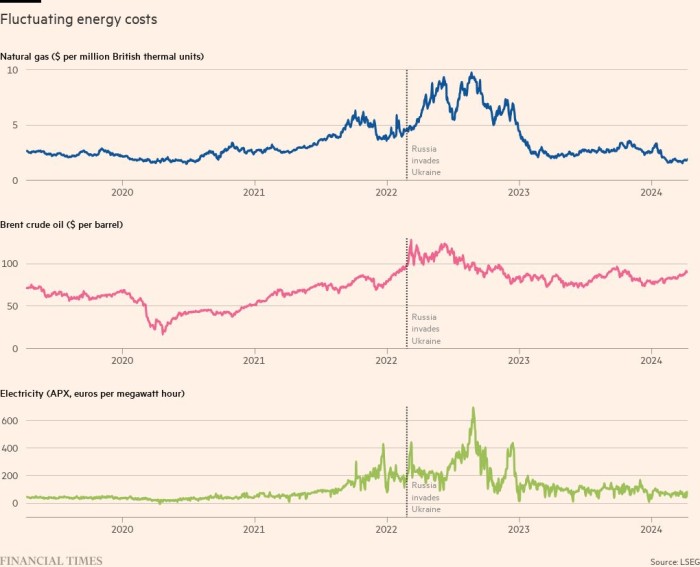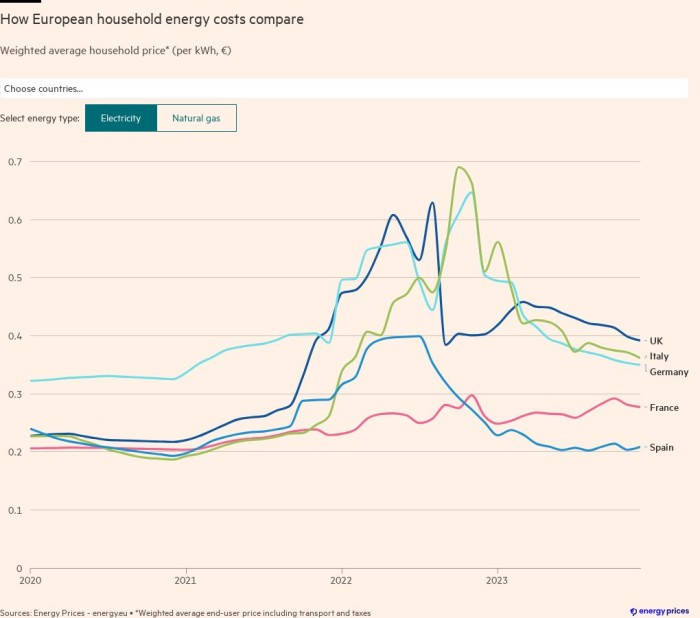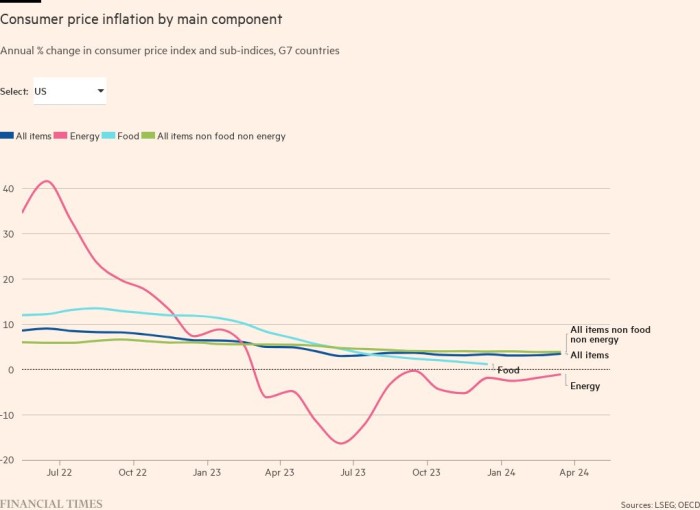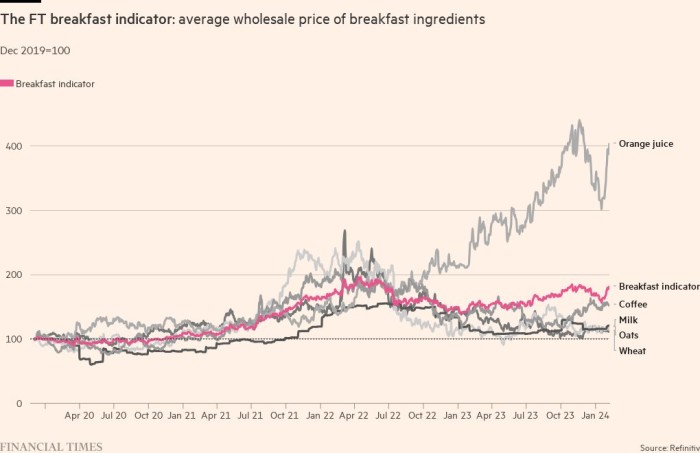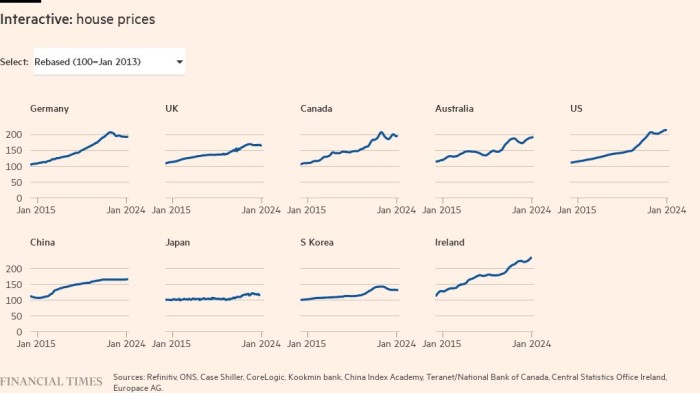Inflation has started to show signs of easing from the multi-decade highs reached in many countries following Russia’s full-scale invasion of Ukraine.
The latest figures for most of the world’s largest economies still make for worrying reading, with price pressures remaining high as the war in Ukraine continues to keep energy and food prices elevated. But in some countries pressures have eased and energy and food wholesale prices have declined. Economist and investors also expect inflationary levels to stabilise in the next few years.
High inflation remains geographically broad-based, even if it is lower in many parts of Asia.
Central banks have reacted with a series of interest rate rises, even though higher borrowing costs could exacerbate the squeeze on real incomes.
This page provides a regularly updated visual narrative of consumer price inflation around the world.
It includes economists’ expectations for the future, which still show 2023 inflation projections being revised up for many countries, even though they have stabilised elsewhere including Germany, according to leading forecasters polled by Consensus Economics.
Investors’ expectations of where inflation will be five years from now have stopped increasing, reflecting central banks’ more aggressive tightening and a weakening economic outlook.
In some countries, particularly in Europe, governments’ fiscal packages to offset the higher cost of energy are having an impact.
The rise in energy prices was the main driver of inflation in many countries, even before Russia invaded Ukraine. Daily data show how the pressure has intensified on the back of a conflict that has forced Europe to search for alternative gas supplies.
However, wholesale prices have now eased as a result of weakening global demand and European gas storage facilities being filled close to capacity.
The pass-through from wholesale to consumer prices is not immediate and household and business costs remain elevated in Europe, where the energy crisis has been more intense because of the region’s greater dependence on Russia’s gas.
Higher inflation has also spread beyond energy to many other items, with rising food prices hitting the poorest consumers in particular.
Rising prices limit what households can spend on goods and services. For the less well-off, this could lead to people struggling to afford basics such as food and shelter.
Daily data on staple goods, such as the wholesale price of breakfast ingredients, provide an up-to-date indicator of the pressures faced by consumers. While they have eased in recent months, they remain at high levels.
In developing countries, the wholesale cost of these ingredients has a larger impact on final food prices; food also accounts for a larger share of household spending.
Another point of concern is asset prices, especially for houses.
These soared in many countries during the pandemic, boosted by ultra-loose monetary policy, homeworkers’ desire for more space and government income support schemes. However, higher mortgage rates are already leading to a significant slowdown in house price growth in many countries.

